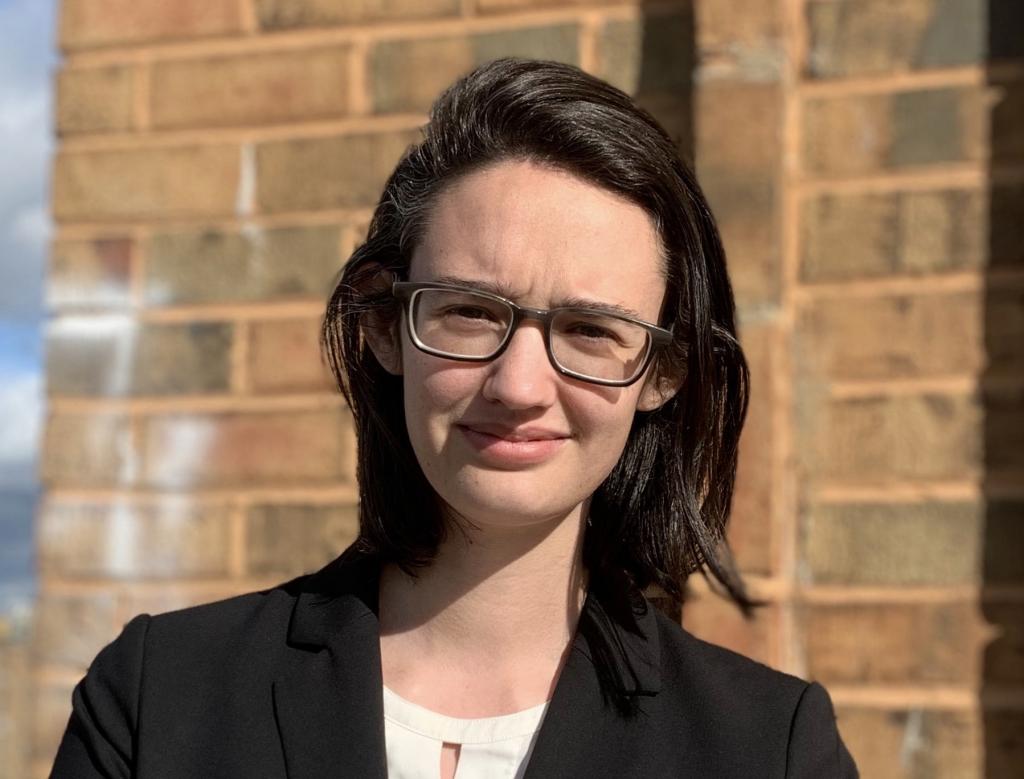Bans on Guns at the Polls Are Plainly Constitutional
The Second Amendment doesn’t offer cover to bring a gun to the polls, nor to use one to intimidate voters.

Published by The Lawfare Institute
in Cooperation With

There’s always some worry about violence or intimidation at the polls, but this year that concern is particularly stark. The past year has seen increased activity from white supremacist terrorist organizations and anti-lockdown protesters brandishing military-style assault weapons at state capitols—not to mention the president’s requests to his followers to join the “Trump army” and engage in aggressive poll watching. Though early voting has gone relatively smoothly, state and local officials are nonetheless grappling with how to prevent armed confrontation at polling places, either directly, by prohibiting guns at the polls, or indirectly, via the Voting Rights Act of 1965 (which prohibits voter intimidation) and state disorderly conduct statutes.
Three weeks ago, federal authorities foiled an armed plot to kidnap Michigan Governor Gretchen Whitmer. Last week, the state issued additional guidance to respond to the threat of election-related violence, joining other states in prohibiting firearms inside and within 100 feet of entrances to polling places. Like clockwork, some Republican state lawmakers immediately criticized the law as an “in your face unconstitutional ban.” Groups such as Michigan Open Carry have sued, claiming the prohibition is illegal on state law grounds—their suit did not include a claim that the ban violates the Second Amendment. This suit was successful: A state court judge recently struck down the ban solely on state-law procedure grounds—a holding that the state appeals court later upheld.
But it’s possible that Second Amendment challenges to similar rules will crop up as other groups protest what they view as the “in your face unconstitutional” nature of these types of bans. Here, the answer is clear cut: There’s nothing about banning guns at the polls that’s inconsistent with the Second Amendment. It’s never been an open question. The Second Amendment does not preclude these types of bans.
The very same generation that added the Second Amendment to the Constitution passed state laws prohibiting bringing guns to the polls. For example, the 1776 Delaware State Constitution provided that “no person shall come armed to any of them, and no muster of the militia shall be made on that day.” It further provided that no “battalion or company” could come within a mile of the polling place for 24 hours before or after the election in order “[t]o prevent any violence or force being used at the said elections.” The same year, Maryland passed a nearly identical resolution. New York followed suit a decade later. More and more states added similar laws during Reconstruction and the early 20th century.
By the logic of the Supreme Court’s reigning Second Amendment case, District of Columbia v. Heller (2008), these founding-era laws demonstrate that the Second Amendment’s scope does not reach carrying firearms to polling places, or their use to intimidate voters. In Heller, the court looked to founding-era statutes and state constitutions, as well as state laws, legal commentary and court opinions from the 19th century, to conclude that the Second Amendment protected the right of individuals to keep and bear arms for self-defense. Though the Supreme Court—in an opinion written by Justice Antonin Scalia—agreed that the right for individuals to bear arms had some limits, the challenged prohibition of handguns from “the home, where the need for defense of self, family and property is most acute,” the court explained, “would fail constitutional muster” “[u]nder any of the standards of scrutiny that we have applied to enumerated constitutional rights.” In other words, even applying the most lenient standard of judicial review of burdens to constitutional rights, the Second Amendment prevented the government from banning handguns in the home.
Heller is, by its own admission, a murky opinion. It did not purport to “clarify the entire field,” but it did take pains to clarify that it did not “cast doubt” on “longstanding prohibitions,” such as “laws forbidding the carrying of firearms in sensitive places such as schools and government buildings.” These, the court explained, were “presumptively lawful regulatory measures.” Likewise, Scalia similarly embraced the Supreme Court’s long-standing precedent that the Second Amendment permitted governments to regulate “bodies of men” that “associate together as military organizations” and keep them from “parad[ing] with arms in cities and towns.”
Since Heller, courts have largely coalesced around a two-step inquiry for judging whether a law violates the Second Amendment. First, a court asks whether the historical record demonstrates that the conduct burdened by the challenged law is within the scope of the Second Amendment right. Second, a court asks if the burden on any Second Amendment-protected conduct survives the scrutiny of how closely the law’s means meet its ends. Notably, Justice Brett Kavanaugh and other newly appointed conservative circuit judges (although not Justice Amy Coney Barrett when she was a circuit judge) have, in separate opinions, suggested that the entire inquiry should be focused on history and tradition, without any means-end scrutiny.
Because the very same generation that amended the Constitution to include the Second Amendment also adopted state laws banning guns from polling places, the amendment’s scope cannot, according to Heller, be understood to prohibit those state laws. The fact that such laws continued to be added to the books throughout the 19th and early 20th centuries further demonstrates that bans on guns at polling places fall outside the scope of the Second Amendment. If a state has the authority to fully prohibit the carrying of firearms at the polls, it necessarily follows that the state also has authority to place restrictions—such as prohibitions on voter intimidation—on how they may be used.
Even if a law’s challengers manage to convince a court that carrying firearms into or around polling places is Second Amendment-protected conduct, the law need only pass intermediate scrutiny—which requires only that there be a “reasonable fit” between the challenged regulation and an important government interest—to survive. A ban on guns at polling places is exceedingly narrow and in line with other prohibitions on firearms that courts have upheld. For example, a similar challenge to U.S. Postal Service (USPS) regulations prohibiting guns from both the post office and the adjacent parking lot is illustrative. In that case, Bonidy v. USPS (2015), the U.S. Court of Appeals for the Tenth Circuit reasoned that the USPS had an “important interest in creating a safe environment for its patrons and employees.” The court reasoned that the USPS had an interest in extending this policy to parking lots for administrative convenience but also because “patrons must often pass through a USPS-owned parking lot to get to the door of a post office building” and “the security of the postal building itself is integrally related to the security of the parking lot adjacent to it.”
Polling places, like the post offices considered in Bonidy, implicate the government’s interest in avoiding voter intimidation and include a generalized interest in ensuring the safety of individuals at polling locations. However, the government’s interest also reaches further: Intimidation, including by armed civilians, has long been a tool to prevent full participation in U.S. democracy. For example, in the years leading to the passage of the Voting Rights Act of 1965, the Ku Klux Klan and similar groups responded to the efforts of civil rights leaders and legislators to expand voting rights by increasing efforts to intimidate voters. The result was “arson, murders, bombing campaigns, threats, assaults, and cross burnings to other forms of racial terror” to prevent Black Americans from voting. In 1961, the federal Civil Rights Commission reported that “in some 100 counties in eight Southern States,” threats of “physical violence” still kept Black Americans from exercising their right to vote.
Just as the “security of the postal building itself” in Bonidy was “integrally related to the security of the parking lot adjacent to it,” the ability of voters to vote free from intimidation is integrally related to ensuring that voters may arrive at and access their polling location without intimidation. The government’s important interest in regulating the carry and use of firearms thus must extend beyond the four walls of the polling location and reach areas, such as access points, parking lots or the line to enter the voting location. Indeed, in Burson v. Freeman (1992), the Supreme Court noted that preventing voter intimidation is a “compelling” government interest.
However, an important government interest is not sufficient to survive intermediate scrutiny; there must also be a reasonable fit between the challenged regulation and that important government objective. Prohibiting the open carry of firearms in the immediate vicinity of a polling location—an act that is reasonably likely to intimidate those in line, especially in the current political climate—meets this requirement, because the curtailment of any Second Amendment right is limited both in geographic scope and in time, such that it applies only to the moments and places in which voter intimidation is most likely to occur. Aggressive enforcement of the Voting Rights Act’s prohibitions on intimidation is even more likely to satisfy this requirement because it is a direct regulation of the government interest (preventing intimidation) and is even narrower than a complete prohibition on firearms. Free and fair elections require that voters be able to cast their ballots free from fear at the polls.
Any court or government considering potential Second Amendment challenges to laws banning firearms at the polls need only look to history—from the nation’s founding to the civil rights era—to see that the states can regulate firearms in order to secure the right to vote free from the specter of violence, unrest or intimidation. The Second Amendment doesn’t offer cover to bring a gun to the polls, nor to use one to intimidate voters.
Disclosure: The authors work for Protect Democracy, which has represented Lawfare editors Benjamin Wittes, Jack Goldsmith, Scott Anderson and Susan Hennessey on a number of separate matters.






